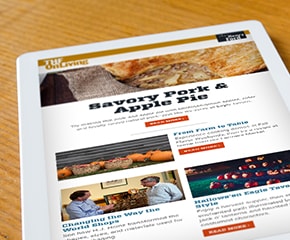"An American Dictionary of the English Language" by Noah Webster, 1828, Volume 1
Add to SetSummary
Noah Webster wrote the first dictionary of American English. It was a radical attempt to foster a uniform language for the United States. Webster's first edition in 1828 contained about 70,000 entries -- some 12,000 more than had appeared in earlier vocabulary lists. Webster added many technical and scientific terms, included common Americanisms, and suggested new ways of spelling and pronouncing words.
Noah Webster wrote the first dictionary of American English. It was a radical attempt to foster a uniform language for the United States. Webster's first edition in 1828 contained about 70,000 entries -- some 12,000 more than had appeared in earlier vocabulary lists. Webster added many technical and scientific terms, included common Americanisms, and suggested new ways of spelling and pronouncing words.
Artifact
Dictionary
Date Made
1828
Creators
Durand, A. B. (Asher Brown), 1796-1886
Morse, Samuel Finley Breese, 1791-1872
Burton, James R., 1798 or 1799-
Place of Creation
United States, New York, New York
United States, Connecticut, New Haven
Creator Notes
Dictionary by Noah Webster; printed by Hezekiah Howe, New Haven, Connecticut; published by S. Converse, New York, New York. Frontispiece engraved by A. B. Durand after a portrait by Samuel Morse; printed by J. R. Burton.
Collection Title
On Exhibit
By Request in the Benson Ford Research Center
Object ID
70.86.1.1
Credit
From the Collections of The Henry Ford.
Material
Paper (Fiber product)
Boards (Binding components)
Cloth
Technique
Printing (Process)
Dimensions
Height: 12.25 in (Book)
Width: 9.75 in (Book)
Height: 12.875 in (Slipcase)
Width: 10.5 in (Slipcase)
Inscriptions
Inside front cover: Presented to Mrs. Barnes by the author as a testimony of respect for her late husband





